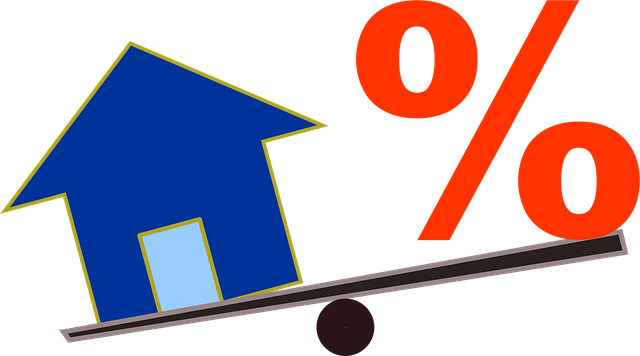Lower interest rates dramatically affect the real estate market by making property investments more attractive and affordable, driving demand, and boosting property values. For investors, this translates to better financing options, portfolio expansion, and higher profitability. Homeowners with adjustable-rate mortgages can refinance for stable lower rates, while buyers can leverage government programs and flexible down payment options to achieve homeownership and save for other financial goals. Globally, lower rates increase homeownership in developed nations and attract foreign investment in emerging markets, fueling robust real estate growth.
In today’s economic landscape, lower interest rates are reshaping the real estate market. This article delves into the multifaceted effects of reduced rates on property investments, offering valuable insights for both owners and buyers. We explore proven strategies to optimize monthly payments, leveraging historical case studies to demonstrate the significant impact of these changes. By understanding these dynamics, investors can navigate the market more effectively, capitalizing on opportunities presented by lower interest rates in real estate.
Understanding the Impact of Lower Interest Rates on Real Estate Investments

Lower interest rates have a profound impact on the real estate market, making investments in properties more attractive and affordable. When interest rates decline, mortgage borrowing becomes cheaper for both homebuyers and investors. This encourages more people to enter the market, driving up demand for real estate. As a result, property values often appreciate, offering significant returns for those who invest wisely.
For real estate investors, lower interest rates open doors to several opportunities. They can secure better financing terms, allowing them to either purchase additional properties or renegotiate existing loans. This increased accessibility to capital enables investors to expand their portfolios or maximize the potential of their current holdings. Ultimately, these favorable conditions can lead to enhanced profitability and long-term growth in the real estate sector.
Strategies to Optimize Monthly Payments for Property Owners and Buyers

For property owners looking to optimize their financial situation, strategically adjusting monthly payments can significantly impact their overall real estate investment. One effective strategy involves refinancing with lower interest rates, which reduces the cost of borrowing and lowers monthly obligations. This is particularly beneficial for those with adjustable-rate mortgages, as they may take advantage of favorable market conditions to lock in a more stable, lower rate.
Buyers in the real estate market can also benefit from this approach. By understanding their budget and exploring options like government-backed loans or flexible down payment programs, potential homeowners can secure financing with lower rates and more manageable monthly payments. This not only makes owning a home more accessible but also allows buyers to allocate savings towards other important aspects of their financial lives, such as building an emergency fund or investing for the future.
Case Studies: How Lower Rates Have Affected Real Estate Markets Historically

Lower interest rates have a profound impact on real estate markets, as seen in various case studies around the globe. When central banks lower key lending rates, it often triggers a chain reaction that influences housing affordability and investor behavior. Historically, this has led to significant shifts within real estate sectors.
In many developed countries, reduced interest rates have been associated with increased homeownership rates. Lower borrowing costs make mortgages more accessible, encouraging potential buyers to enter the market. This surge in demand often results in higher property values and a stronger real estate landscape. Conversely, in emerging markets, lower rates can attract foreign investment, fueling real estate booms and diversifying local economies.






